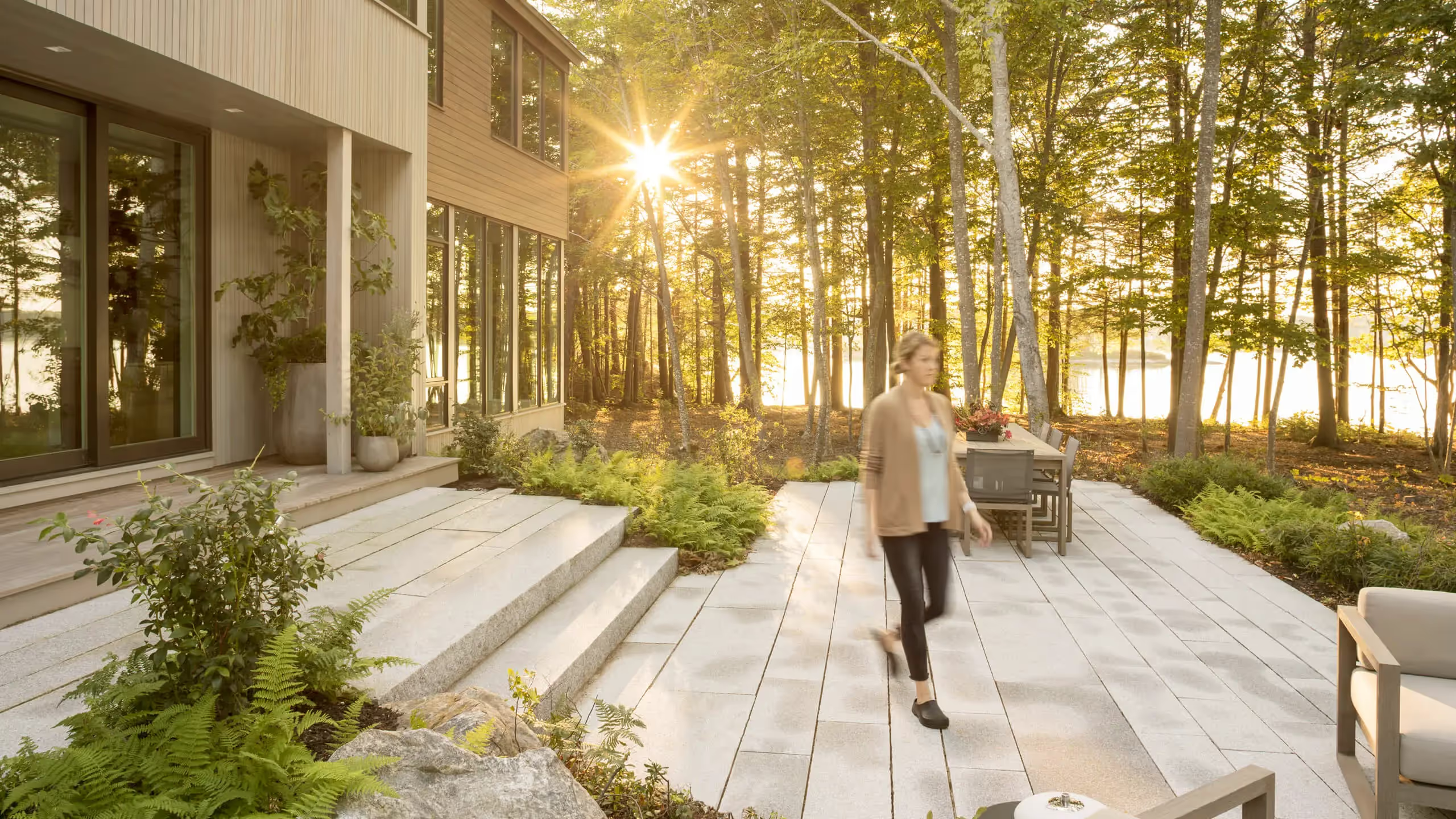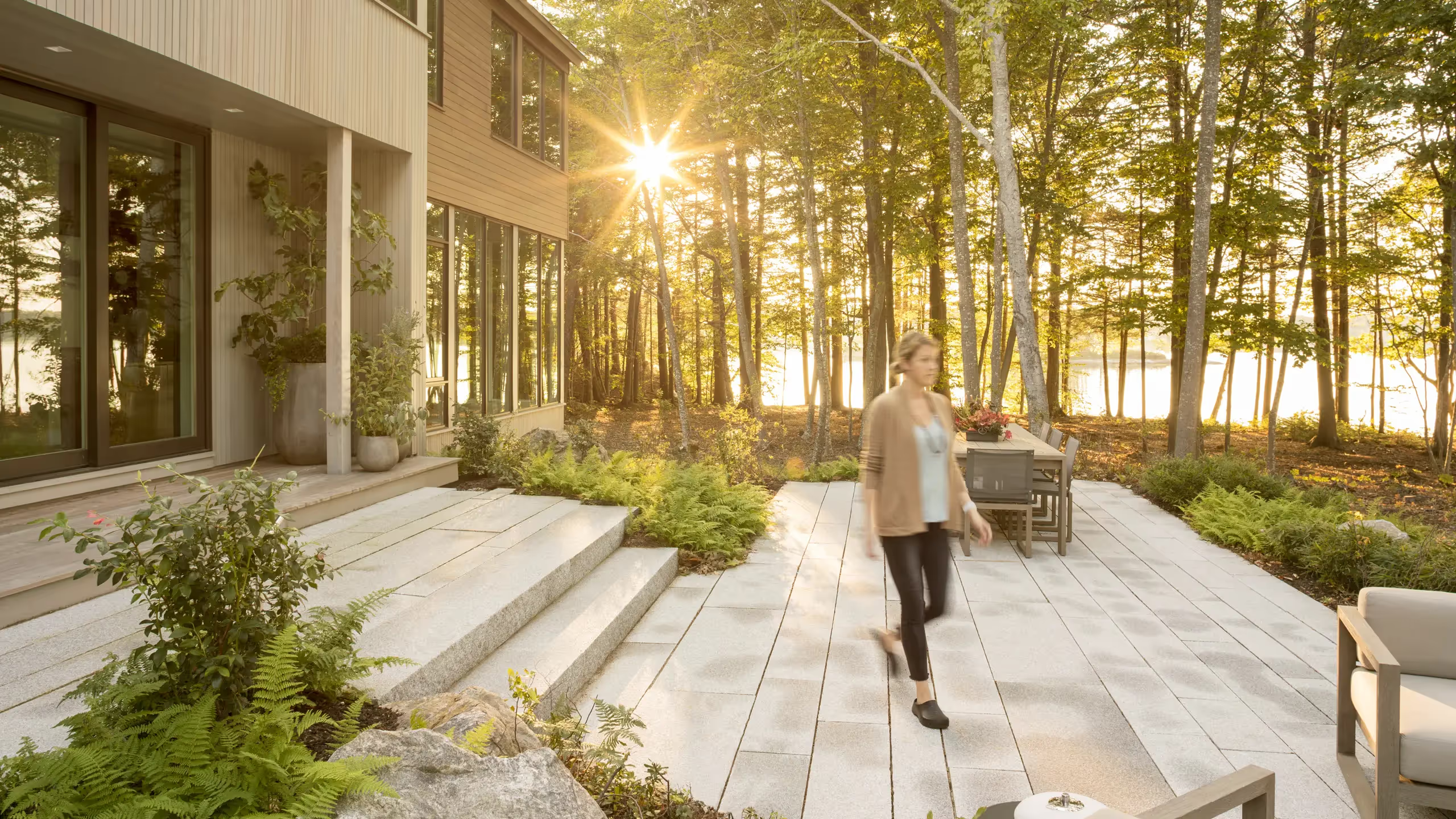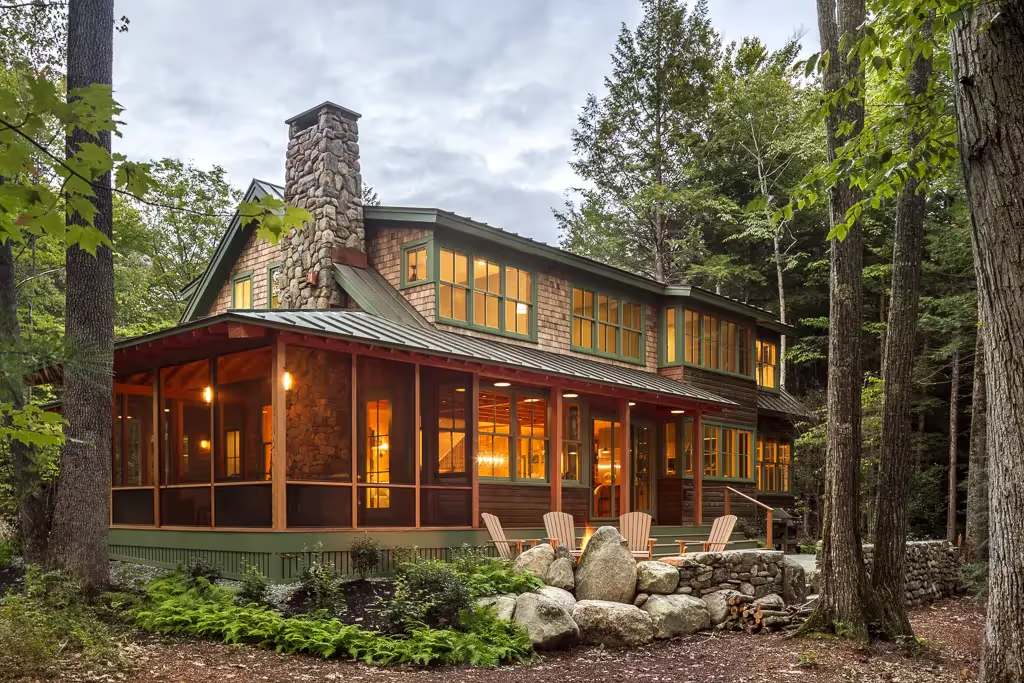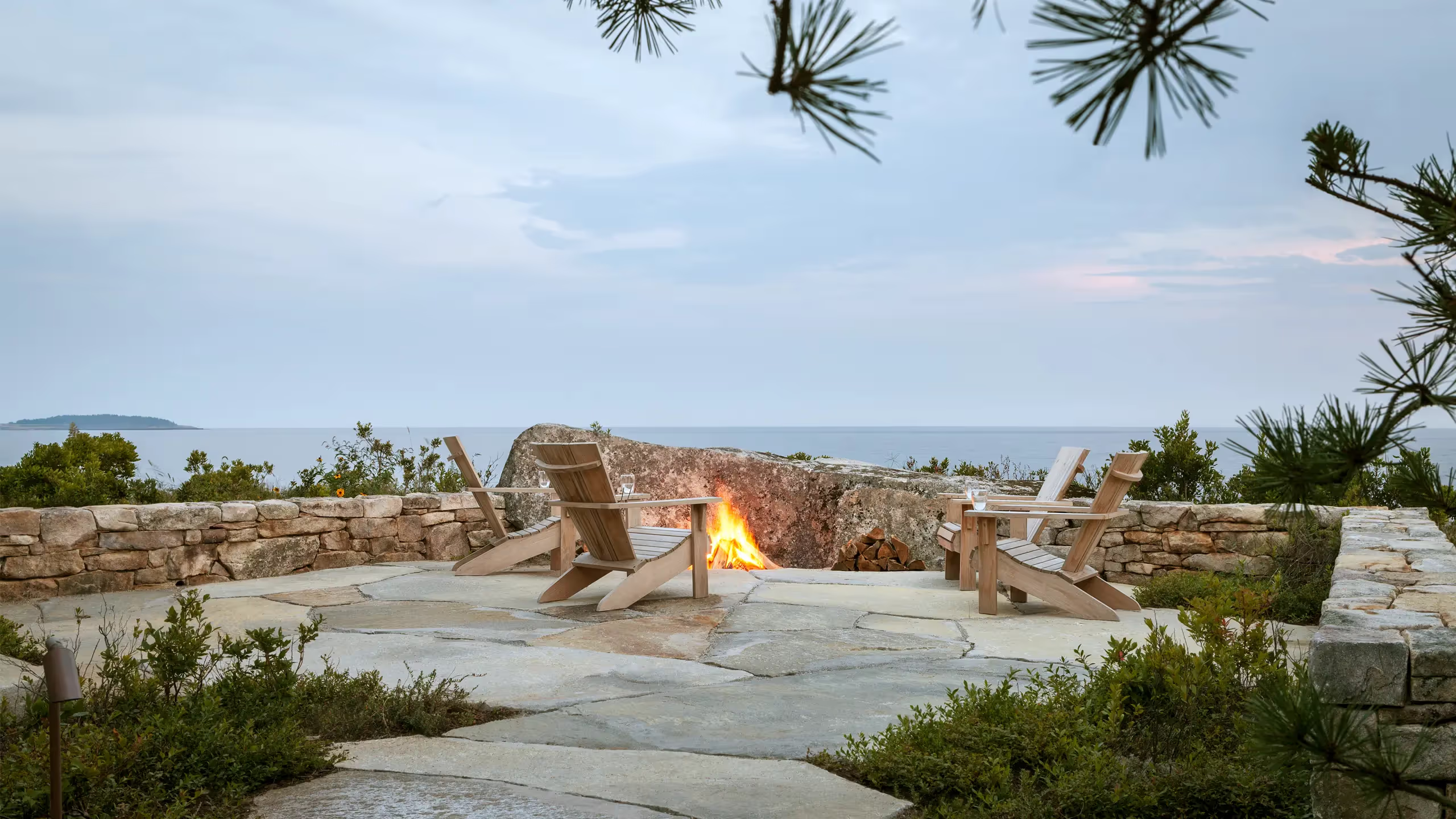The Synergy Between Architects & Landscape Architects


When it comes to creating beautiful and functional spaces, architecture and landscape architecture intertwine in a dance of creativity and connection. Our collaboration with landscape architects is two-fold: it’s about both connecting the home to the land and connecting inside to outside. Both disciplines contribute their unique perspectives, expertise, and artistic vision to shape environments that are timeless and look like they’ve always been there. As an architectural studio committed to a team approach, we recognize the value in collaborating closely with landscape architects.
With their broad understanding of the natural environment and the interplay between built structures and open spaces, landscape architects bring a unique perspective to the table. Their expertise lies in crafting outdoor spaces that seamlessly blend with the built environment, taking into account the topography, climate, and existing natural elements. By harmonizing the built form with its surroundings, they create landscapes that engage the senses, inspire serenity, and foster a profound connection with nature.
When we as architects can collaborate with landscape architects, we are able to create spaces that breathe, that honor the context in which they exist, and that invite people to connect with their environment on a deeper level.
Below, we asked three landscape architects whom we work with regularly to answer some questions about their work and its convergence with ours.
Q: Architects and landscape architects are both designing around largely the same set of criteria, mostly dictated by the site. From your perspective, what is the relationship between architecture and landscape architecture? What can landscape architects learn from architects and vice versa?
A: At its simplest, I suppose that–in site-responsive and contextually sensitive design–landscape’s purview is the transition from the landscape context inwards to the built condition, while the architect’s is the transition outward from built to natural. But that assumes some sort of line between the disciplines, which may be negotiated in each project depending on the primacy or hierarchy of elements. What’s more in control: the chicken or the egg, the architecture or the landscape?
Instead, I find myself seeing the designed landscape as the tidal zone–a unique area influenced by both forces, where there’s a continuous ebb and flow of influence between architectural character, natural systems, project-driven program, and a quality of place all its own. In this context, landscape designers and architects do our best when neither are trying to exert some sort of hierarchical control over design; rather, a collaborative conversation about possibilities, aesthetic and functional, fuels great place-making that should feel both timeless and timely, serving pragmatic program needs and establishing an enduring emotional connection to place.
Beyond these big-picture platitudes, though, I think architects can be great at helping landscape architects hone specific inside-outside connections: negotiating the immediate relationships between architecture and landscape at points of access and connection and jointly developing those inside-outside rooms that extend a structure’s footprint, as well as in setting a tone for design based on some really great deep dives with clients on character and function. And landscape architects can help the architecture literally look beyond its own walls–getting us away from looking at architecture as an object to be viewed, and moving towards an experience where we use architecture as an aperture and point of access to appreciate the landscape beyond.
At Casco Bay Island Retreat I think the landscape does a really nice job of threading the needle within a shifting zone of inside-outside influences. On the waterside of the home a series of sleek, paved spaces push echoes of the long horizontal volumes and material character of the home outward, while a pretty wild and native planting palette erodes the edges of those spaces and pushes inward. Together these forces create architectural terraces–outdoor rooms–sized for specific bits of program (dining, outdoor cooking, lounging) that float out and dissolve into the landscape context.
-Emma Schiffman Kelly, Principal of Emma Kelly Landscape
Q: How do you work with architects to create a transition from inside to outside and vice versa? What sorts of considerations do you have to take into account to ease these transitions?
A. The most successful transitions come from early and continued collaboration with an architect regarding the overall project and its intentions. Overlapping design goals can result in transitions that are anchored in the larger intentions of a project. These can establish common physical, visual, and conceptual relationships between the architecture and the landscape. Important opportunities can be found in the design of entrance spaces experienced coming into and out of a building. Design considerations for these areas often involve elevation changes and the integration of stairs, landings, and possible ramps. Linking related materials between the landscape and the building can strengthen these transitions. An example of this is extending the use of stone from a walkway approaching a building up to and into the flooring of an entry foyer.
Properly scaled transition spaces such as porches and terraces can serve as a strong bridge between the building and the landscape, often blurring the boundaries between them. Another important transition opportunity lies in how the edges around buildings and the landscape meet. Architecture that defines and shapes outdoor space serves to lock the landscape and architecture together, much like the fitting together of puzzle pieces. Plantings can also connect the architecture to the landscape, as seen when approaching a building and from within it. Formal plantings, expressing a strong geometry, might be paired with one style of architecture while looser, more naturalistic plantings with another.
These shared opportunities between the professions of architecture and landscape architecture can be seen in a current project in which Whitten Architects and Richardson & Associates are collaborating. The project includes a pergola at the entry to a residence that extends outward into and through a grove of pitch pines to an arrival court. A flush stone slab walkway lies under the pergola and several of the pergola posts land on granite blocks that crest out of the adjacent ground covers. The furthest set of pergola posts are supported by a low wall that extends outward to either side of the walkway. The multitude of overlaps between the architecture and the landscape is intended to define a special arrival to this home as one transitions from inside to out and vice versa.
-Todd Richardson, Principal of Richardson & Associates, Landscape Architects
Q. How does the element of TIME play a role in landscape architecture? What sort of things go into consideration when you're thinking about designing landscapes that will evolve over time?
A. I start by thinking about the interconnectedness of time and space in the landscape and how they evolve together...or the landscape's 'becoming' nature. This includes a span of temporal scales; the long view (geologic time) to fleeting (ephemeral) and everything in between. There is also the notion of timelessness–designing spaces for internal contemplation when physical time seems to stop. The tools at our disposal that register time are the kit of parts informed by the client's values, design guidelines, and budget. When thinking about plant material, for example, I consider the succession of vegetation in its different forms (growth habits, seasonality, life spans, maintenance). A tree that is planted as a specimen at 6 feet tall will change the character of a space dramatically in a generation. Hardscape materials similarly register time in their own way and require calculations on durability and how they reflect time through patina and wear. As these considerations relate to residential projects and my working process, I design spaces with temporal intention that will evolve over time to enhance the qualities of a building and its connection to place.
I've collaborated with the Whitten team on coastal residential projects where time is registered by seasonal light and the tides. In this context, we design landscapes to encourage encounters with the natural world that in turn promote awareness of the elements and their cycles: a footpath to the high-tide line, plantings with fruit that attract migrating birds, organization of stones to mark summer solstice–subtle design gestures that wind a different clock.
-Soren deNiord, Principal of Soren Deniord Design Studio









